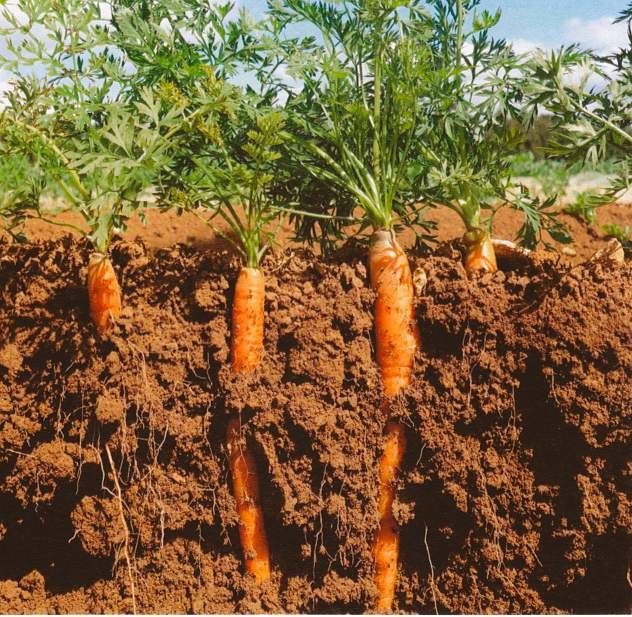Planting Carrots

Carrots can be sown early, after danger of heavy frost is over. Sow every two weeks thereafter for continuous harvest, or simply sow a second crop in midsummer for fall harvest. In frost free areas, sow in fall. For more info. see Preparing the Soil
Do Not Transplant Carrots
Carrots do not like to be transplanted and are best sown directly into the garden bed. Sow carrot seeds in deep, well-worked soil in full sun. Straight roots require soil that is light, loosened deeply, and free of stones, so prepare a carrot planting thoroughly. Consider using a soil amendment such as compost if your soil is heavy. If you choose long carrot varieties, your soil will need to be worked more deeply.
Sow thinly in rows 12 inches apart and cover with ½ inch of fine soil. Firm lightly and keep evenly moist.
Since seedlings have fine leaves it may be beneficial to plant radish along with your carrot seed. The radishes will be harvested well before carrots form and act as a guide to the carrot row.
Seedlings emerge in 14-21 days.
Thin plants to stand 1 inch apart when seedlings are 3 inches high.

Carrot Seeds – Danvers 126, Vegetable Seed…
Danvers is an excellent high – yield carrot that produces a dependably delicious taste…. [More]
How to Grow
Carrots are easy to grow from seed and can be harvested immature as baby roots, which are crunchy but tender, and quite sweet. They can also be left to reach their full size, shape, and color. All carrots are high in beta-carotene, a pigment that we metabolize as vitamin A. A lack of vitamin A can result in poor vision, hence the notion that carrots are good for eyesight. They are also rich in Vitamins C, B6, and Niacin.
Because carrots grow vertical, carrots can be grown densely, and are useful in a smaller growing area. The seeds can be sown from early spring through late summer.
Sow the seeds shallowly and then maintain moisture in that top layer of soil until they germinate. Because they may take as long as three weeks to germinate, this can be challenging, especially in hot weather or in exposed, windy gardens. The way to achieve this is to water very deeply prior to planting, and then either water very regularly or employ some other means to reduce evaporation.
Reduce Wireworms Attracted to Carrots
If you have the luxury of growing carrots without the presence of carrot rust flies, you may still be concerned with soil dwelling insects such as wireworms. They are so attracted to carrots, in fact, that a full-grown carrot makes a very good lure for wireworms. Just bury carrot pieces in several areas around the intended seedbed, and mark where you bury them. If wireworms are present, you can then dig up the carrot pieces and easily remove the wireworms from the bed, or at least go a long way to reducing their population.
The bed should be loose and completely free of stones or other debris. Avoid nitrogen-heavy fertilizers and manure that has not been composted for more than a year, as you may end up with big, bushy tops on pitiful, spindly roots.

